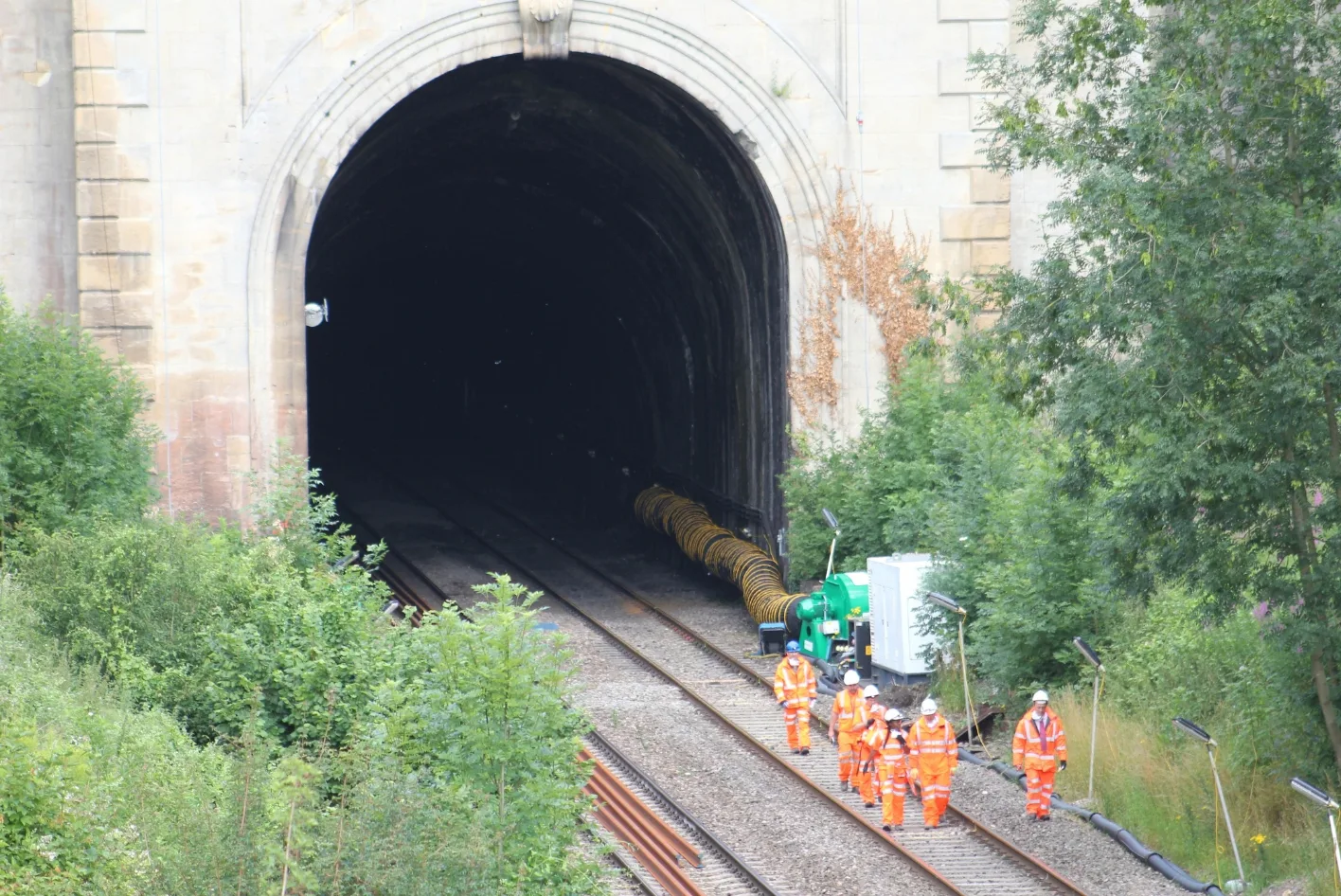Over 1.7 billion rail journeys are made in the UK each year, thanks to thousands of rail engineers managing and upgrading the UK’s long-established network.
Essential works carried out by engineers is often done in live environments or outside of typical working hours, making engineering controls such as dust suppression for ballast dust management through to forced tunnel ventilation, a continuous priority.
RVT Group have extensive experience providing compliant hazard control solutions to the rail industry that protect the engineers and nearby public for work including track repairs, tunnel maintenance, station construction, bridge upgrades and more. Projects we have supported include Box Tunnel (pictured left) and Waterloo Station upgrades.
Our proven experience and extensive certifications (including RISQS) have established RVT Group as a trusted provider in the sector. We pride ourselves on understanding the need to meet strict deadlines whilst prioritising safety and compliance throughout.

Force fresh air via ducting from outside a tunnel (or similar space) to dilute airborne hazards and help ensure safe air quality for workers.
Use extraction and filtration units which are designed to remove dangerous fumes at source, from activities such as thermit welding.
Utilise acoustic barriers and enclosures to contain work areas and minimise disruption in live environments.
Install environmental monitoring around the work area to measure hazards, prove compliance and provide real-time insights into exposure levels.
When working in an enclosed space, such as a tunnel, poor air quality can put the health of your workers at significant risk. Download a copy of this poster to hang in your welfare room, or request a hard copy.
It's essential you have an effective ventilation strategy in place to protect track engineers. Download our 10 minute tool box talk for effective tunnel ventilation.
In 2019, brand new scientific evidence was released from the IARC proving a link between welding fumes and cancer; as such the HSE guidelines have been revised. Download this whitepaper to learn more.
Personal monitoring or 'sampling, is used to measure exposure to substances hazardous to health, for example, dust, gas, vibration and noise. All of these hazards can have a serious effect on a workers health and the environment.